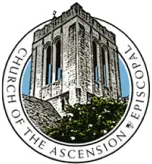From the Rector…
In the early church, sainthood was often defined by martyrdom. Under the Roman Empire—especially during Nero’s reign—Christians were convenient scapegoats whenever something went wrong. When faced with drought, poor crops, or war, Roman leaders shifted blame onto marginalized groups, and Christians were an easy target. They were burned at the stake or thrown to the lions, their suffering turned into both punishment and entertainment. I suppose that’s what happens when there are no streaming services—people found their drama in the arena.
Thankfully, as the church matured and Christianity became more accepted, martyrdom ceased to be the primary qualification for sainthood. One no longer had to burn at the stake—though some still did (think of Thomas Cranmer during the Reformation). Over time, the persecution came from within rather than without—remember the Spanish Inquisition—and words like heretic replaced the sword. Yet even amid this darker history, the church also began to lift up holy men and women whose lives inspired faith and deepened spiritual imagination. We came to honor mystics, monastics, and those whose quiet devotion revealed the presence of God.
Today, our understanding of sainthood is broader and more grace-filled. Saints include the martyrs and mystics, the miracle-workers and faithful witnesses, and all who simply love to do Jesus’ will. We recognize that saints are not some distant, untouchable figures—they are people like you and me.
Ascension has known its share of saints over the years—and still does. I love hearing stories of those who have knelt in these pews, prayed within these walls, and given generously to the glory of God. Their names are etched on plaques, candlesticks, and crosses throughout the church, quiet reminders of their faith and devotion. But beyond the names we can see are countless others whose names have been lost to time—anonymous saints whose prayers, songs, and service were the lifeblood of this place.
As I read those inscriptions, I’m reminded that their gifts continue to sustain our partnership with God even now. Their faith built the foundation upon which we stand. And it calls us to recognize that we too are saints of God. The worship we offer, the prayers we lift, the ministries we support—all of it is about more than maintaining what is. It’s about nurturing what can be: the possibilities, hopes, and dreams that will inspire those who come after us.
We are all saints of God—shaped by those who came before and shaping the faith of those yet to come. We may not be martyrs, mystics, or monastics, but we can still be holy people who love to do Jesus’ will. And in the end, that is all God asks of us.
Light and Life,
Candice+
